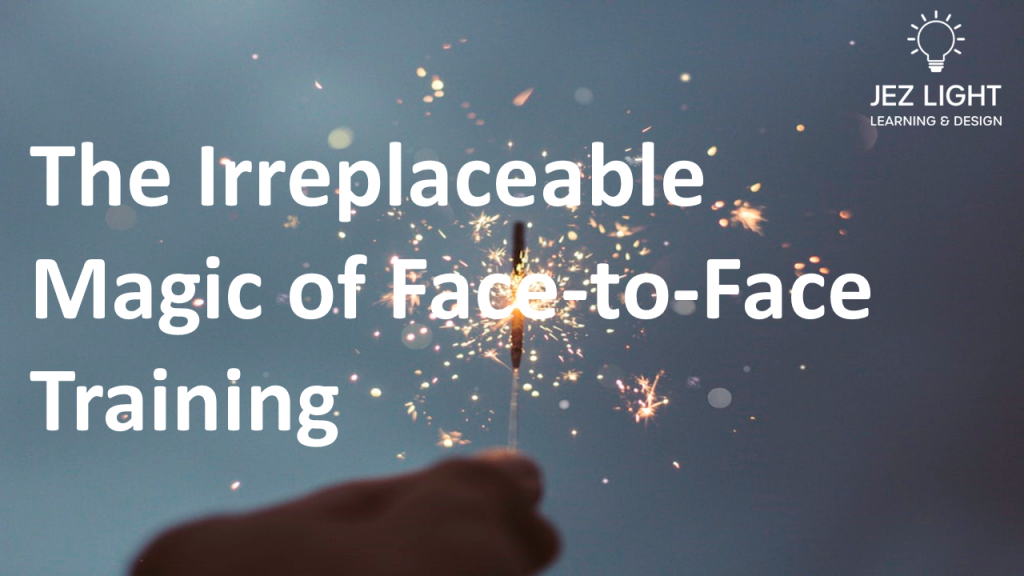Before we start, we should say, we LOVE virtual training and everything it brings.
We just wanted to remind people that there is also a place for face-to-face training which can create irreplaceable connections and learning moments.
There is always room for both options! We find face to face has been incredibly successful for our clients who have requested problem solving modules or workshops. This is a summary of our experiences.
When it comes to fostering creativity in problem-solving, the impact of in-person training is profound, offering a unique set of advantages that overtake the virtual world. Things we spot that really stand out in a face to face experience are:
Real-Time Collaboration
Face-to-face training creates an environment where real-time collaboration thrives. The immediacy of communication allows participants to bounce ideas off each other, share diverse perspectives, and collectively explore solutions. The energy of in-person collaboration often lead to innovative problem-solving approaches.
Non-Verbal Cues and Body Language
A significant portion of communication is non-verbal, and face-to-face training allows for this exchange of ideas through body language and facial expressions. These subtle cues contribute to a richer understanding of the problem at hand, fostering empathy and enhancing the creative problem-solving process.
Creativity Sparks
In-person interactions create an atmosphere where creativity can spark spontaneously. Whether it’s a casual conversation during a break or an impromptu brainstorming session, face-to-face training encourages these unique moments that can lead to breakthrough solutions, unscripted and inspired by the immediate surroundings.
Trust and Rapport
Establishing trust and rapport is fundamental to effective collaboration. Face-to-face training provides the opportunity for participants to build personal connections, fostering a sense of camaraderie and openness. This foundation supports a more comfortable exchange of ideas, allowing for a deeper exploration of creative problem-solving strategies.
Immersive Learning Environments
The physical presence of participants in a shared space creates immersive learning environments. Workshops, simulations, and hands-on activities become more impactful when experienced collectively. Once inside the learning process, individuals are more likely to tap into their creativity, applying insights directly to problem-solving scenarios.
Adaptability and Flexibility
Face-to-face training allows for on-the-fly adjustments and adaptations to the learning experience. Trainers can often quickly tailor activities based on the group’s dynamics, respond to immediate questions & issues, and pivot directions to address emerging needs.
Cultivating a Learning Community
In-person training grows the sense of belonging to a learning community. Participants can feel connected to a shared purpose, creating an environment where collaboration feels natural, and the creativity of the group is harnessed for effective problem-solving. This sense of community often extends beyond the training room, often creating a lasting support network afterwards.
We deliver both virtual and face to face solutions, often blending the two, but our experience tells us if you are considering problem solving as a module, then in person is always the way to go.
Reach out to us for advice on this, and many other leanring & design topics. We’d be happy to help.

